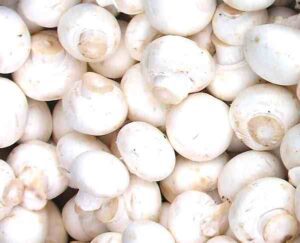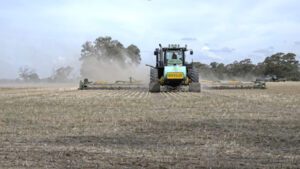Aloe vera farming is not a new concept. It’s an old business and people are growing aloe vera for many different purposes from the ancient time. Aloe vera is mainly cultivated for commercial products, mainly as a topical treatment uses over centuries.
Aloe vera is actually a succulent plant species of the genus Aloe. Aloe is widely distributed (having some 500 species) and is considered as an invasive species in many regions around the world.
Aloe vera originates from the Arabian Peninsula, but grows wild in tropical, semi-tropical and arid climates around the world. It is an evergreen perennial. The name of these plants derives from Latin as aloe and vera (truth).
Aloe vera plants are mainly grown for their medicinal properties. They are also attractive for decorative purposes, and succeeds indoors as a potted plant.
Aloe vera is a stemless or very-short stemmed plant growing to 24-39 inches tall. The leaves are thick and fleshy, green to grey-green, with some varieties showing white flecks on their upper and lower stem surfaces.
The margin of the leaf is serrated and has small white teeth. The flowers are produced in summer on a spike up to 90 cm (35 in) tall, each flower being pendulous, with a yellow tubular corolla 2–3 cm (3⁄4–1+1⁄4 in) long.
Like other Aloe species, Aloe vera forms arbuscular mycorrhiza, a symbiosis that allows the plant better access to mineral nutrients in soil. [1]
Aloe vera is considered to be native only to the south-east. But it has been widely cultivated around the world. And today, it is available and common throughout the world.
Aloe vera is used in many consumer products, including beverages, cosmetics, soap, skin lotion, ointments or in the form of gel for minor burns and subburns.
There is little clinical evidence for the effectiveness or safety of Aloe vera extract as a cosmetic or topical drug.
However, commercial aloe vera farming business is very good and profitable. And you can start this business without any prior experience. Here we are going to discuss more about this business.
Uses of Aloe Vera
Aloe vera is a very common plant which is used as medicine from ancient time. 2 substances from Aloe vera are used for manufacturing commercial products (a clear gel and it’s yellow latex).
Aloe gel is generally used for making tropical medications for skin conditions, such as burns, wounds, frostbite, dry skin, psoriasis, rashes, cold sores etc.
And aloe vera latex is used individually or manufactured as a product with other ingredients to be ingested for relief of constipation. Aloe latex may be obtained in a dried form called resin or as ‘aloe dried juice’.
Aloe vera gel is widely known to relieve sunburn and help heal wounds. But it is also used for many different purposes.
However, there are many uses of aloe vera. Here we are trying to shortly describe about the common uses of aloe vera.
- Gastroesophageal reflux disease (GERD) is a digestive disorder that often results in heartburn. Consuming 1 to 3 ounces of aloe gel at mealtime could reduce the severity of GERD.
- Low toxicity of aloe vera gel makes it a safe and gentle remedy for heartburn.
- Aloe gel con help fruits and vegetables stay fresh, and can eliminate the need for dangerous chemicals that extend the shelf live of produce.
- Researchers found aloe vera extract to be a safe and effective alternative to chemical-based mouthwashes.
- The aloe vera plant’s natural ingredients (which include a healthy dose of vitamin C), can block plaque.
- Aloe gel can also provide relief if you have bleeding or swollen gums.
- Consuming aloe vera gel or juice can help you lowering your blood sugar level. 2 tablespoons of aloe juice per day can cause blood sugar levels to fall in people with type 2 diabetes.
- But people with diabetes, who take glucose-lowering medications, should use caution when consuming aloe vera. The juice along with diabetes medications could possibly lower your glucose count to dangerous levels.[2]
- Aloe vera is considered a natural laxative.
- Aloe vera is widely used for skin care. You can use it for keeping your skin clear and hydrated. This may be because the plant thrives in dry, unstable climates.
Aloe Vera Nutrients
Aloe vera juice is packed with nutrients. Drinking the juice on a regular basis is an excellent way to make sure you don’t become deficient.
It contains important vitamins and minerals like vitamin C, E, B and foloc acid. It also contains small amounts of zinc, sodium, selenium, potassium, manganese, magnesium, calcium, chromium and copper.
Aloe vera is also one of the only plant sources of vitamin B-12. However, keeping your food and drink intake nutrient rich is key in combating most preventable diseases.
Health Benefits of Aloe Vera
Drinking aloe vera juice regularly has many health benefits. The juice is made by crushing or grinding the entire leaf of the aloe vera plant, followed by various steps to purify and filter the liquid.
The juice h as a mild and tolerable flavor and it mixes easily into smoothies and shakes. And this makes aloe juice a practical whole food supplement. However, here we are listing the top health benefits of consuming aloe vera juice.
- Aloe vera juice is a great option to prevent or treat dehydration. Staying hydrated helps your body detox by providing a way for you to purge and flush out impurities. The juice also packs a hefty punch of nutrients that optimize your body’s organ output.
- When it comes to detoxing, healthy liver function is key and aloe juice can improve your liver function.
- Drinking aloe vera juice regularly can help to increase the water content in your intestines. The juice also helps to normalize the healthy bacteria in your gut, keeping your healthy intestinal flora balanced.
- Drinking alue juice is also very beneficial for your skin. The juice is hydrating and may help to reduce the frequency and appearance of acne and other skin problems. It may also help to reduce skin conditions like psoriasis and dermatitis.
- Aloe vera is a rich source of antioxidants and vitamins that may help to protect your skin from many problems.
- Aloe vera contains several enzymes known to help in the breakdown of sugars and fats and to keep your digestion running smoothly.
- Drinking aloe vera juice regularly may give you relief when heartburn attacks. The compounds present in aloe vera juice can help to control secretion of acid in your stomach.
- Aloe vera juice has antioxidant and antibacterial properties. The aloe gel contains powerful antioxidants belonging to a large family of substances known as polyphenols.
- Consuming aloe veral juice accelerates wound healing. It is also helpful for reducing dental plaque.
- Regular consumption is also helpful for treating canker sores.
In a word, aloe vera has a range of therapeutic properties, especially as an ointment for the skin and gums. You can use aloe vera products for many different health problems.
Advantages of Aloe Vera Farming
Commercial aloe vera farming is not a new business idea. People are growing aloe vera in large scale from ancient time. And it is a common and popular business in some countries.
Commercial aloe vera production business has numerous advantages/benefits. Here we are trying to describe about the main/top advantages of commercial aloe vera farming business.
- Commercial aloe vera farming is an old business and many people are already doing this business. So, you don’t have to worry much about starting this business.
- Aloe vera farming is very easy and simple, even the beginners can also start this business.
- You can learn more about aloe vera farming from the existing farmers, especially if you are an absolute beginner.
- Commercial aloe vera farming is not a new business idea. It’s an old and very profitable business, and you will be able to make good profits from this business.
- As it is an old and established business, so you don’t have to worry about the future of this business.
- Growing aloe vera plants is very easy and the plants grow rapidly with little care. And the caring process of aloe vera plants is very easy.
- Marketing aloe vera is very easy, because it already has an established market demand and price.
- Today, marketing aloe vera has become very easy. You will find many companies, and they will buy your products.
- So, you don’t have to worry much about marketing your products.
- Commercial aloe vera farming is profitable. So, it can be a great employment source for the people, especially for the educated unemployed people.
- Capital requirement in commercial production is relatively less. But the return is good.
- Aloe vera is a miracle plant, and it has many benefits. If you enjoy aloe vera juice, then growing your won can be a great way for enjoying it.
How to Start Aloe Vera Farming Business
Starting commercial aloe vera farming is relatively easy. Because the plants are very hardy and grow in less care and other management. If you are a beginner, then you can learn practically about this business from the experienced farmer in your area.

Caring aloe vera plants is very easy and you can start this business even if you are a beginner. Here we are trying to describe more information about starting and operating commercial aloe vera farming business from planting, caring to harvesting and marketing.
Site Selection
You can start commercial aloe vera farming business in almost all types of soils. Actually, aloe vera plants can be grown in a variety of soils ranging from sandy coastal soils to loamy soils of plains.
But the plants can’t withstand in water logging conditions. The plants produce best when grown under well drained loam to coarse sandy loam soil having pH ranges up to 8.5. Adequate sunlight is a must.
Land Preparation
Plough the land thoroughly and bring soil to fine tilth, depending upon soil type. Generally the roots of aloe vera plants don’t penetrate below 20-30 cm.
Add about 6 tonnes of well decomposed cow dung per acre at the time of last ploughing.
Forms ridge and furrow for planting of suckers at 45 or 60 cm apart. If necessary irrigate the field. Plant suckers at 40 or 30 cm apart.
Climate Requirement for Aloe Vera Farming
Aloe vera is actually a warm tropical crop. But it can be grown in various climatic conditions. The plants can be grown successfully in low rainfall regions and also in dry areas with warm humid conditions.
But the aloe vera plants are very sensitive to extreme cold conditions. They generally thrive best on dry sandy soils in the regions where low rainfall is expected. They also can’t tolerate frost and cool climatic conditions.
Aloe Vera Varieties
There are around 150 species of Aloe belonging to family Liliacae. Among those varieties, Aloe barbedensis, A. chinensis, A. perfoliata, A. vulgaris, A indica, A. littoralis and A. abyssinica are commonly grown varieties and have most therapeutic value.
There are also some improved commercial varieties of aloe vera available throughout the world. You should choose the varieties depending on it’s commercial value.
Propagation
Like many other commercial crops, aloe vera plants are not grown from seeds. Rather, propagation is done through root suckers/rhizome cuttings.
Select medium size root suckers in case of root sucker propagation and dig carefully without damaging the mother plant at the base. And then plant directly in the mainland.
But in the case of rhizome cutting propagation, after harvesting dig out the underground rhizome and make about 6 cm length cuttings with 2-3 nodes on them.
Place those on prepared sand beds. And transplant these into the main field once sprouts are popping up. Generally, about 15,000 suckers are required for planting one acre field.
Purchase Plants
You can consider purchasing plants from existing farmers if you can’t produce your small plants through propagation. Purchasing from local suppliers will be good.
Planting
Planting aloe vera is very easy. Keep adequate space between plants for good production. Ideal spacing between plants should be 40 x 45 cm, or 60 x 30 cm. This will accommodate about 50,000 to 55,000 plants per hectare.
Caring
Aloe vera plants are very strong and hardy. They generally grow well in less care and other management.
Although, taking additional caring will help the plants to grow well and produce more. Here we are trying to describe more about the caring process of commercial aloe vera farming business.
Fertilizing
Add about 6 tonnes of well decomposed cow dung during land preparation. Apply basal dose of N:P:K@20:20:20 kg/acre in form of Urea@44 kg, Super Phosphate@125 kg and MOP@34 kg per acre.
Watering
Adequate and timely irrigation is a must for aloe vera farming. Apply irrigation with interval of 2 weeks in summer or dry conditions.
No irrigation required during rainy season. Aloe vera plants generally take less water than other commercial crops.
Irrigate the field immediately after planting the suckers. Do not overwater the fields as it is harmful for crops. Drenching should be done before irrigation, so that extra water will runs out.
Weeding
Regular weeding is very important, because weeds consume nutrients from the soil and the plants suffer. Do weeding and earthing up and keep the field weed free. Generally, weeding is done twice in a year.
Mulching
Mulching helps to retain moisture into the soil, and at the same time it helps to control weeds. You can use organic materials for mulching.
Pests & Diseases
Pests and diseases are less in aloe vera plants. Mealy bugs are common pests of the plants. It is caused by Lepidocephalus and pseudococcus. The leaves start yellowing and withering. Application of Methyl parathion at the rate of 10 ml or Quinalphos at the rate of 20 ml in 10 liters of water is done on roots and shoots of the plant.
Black brown leaf spots and anthracnose are common diseases of the aloe vera plants. Spraying of 70% Neem oil helps to cure from anthracnose disease.
Black Brown spots are characterized by reddish- brown spores that occur in oval or elongated pustules. The disease can develop rapidly when free moisture is available and temperatures are near 20°C. Successive generations of urediniospores can be produced every 10-14 days if conditions are favorable.
Harvesting
Generally, aloe vera plants become ready for harvesting from the second year after planting. Fresh leaves of 3 or 4 can be picked.
You should done harvesting/picking up of leaves during morning or evening times. 3 harvests can be carried in one year time.
The aloe vera leaves are regenerated and thus crop can be harvested for up to 5 years.
Post-Harvesting
Before transporting, allow freshly harvested plant to wilt and loose moisture in the field. Wilting is noticed normally within 24 to 72 hours.
But the plant should be kept dry and cool to prevent fermentation or mould growth. A concrete floor under shade can be used.
Yield
It’s very difficult to tell the exact amount. But an average yield of 40 to 45 tonnes of thick leaves can be obtained from one hectare land.
Marketing
Marketing aloe vera is very easy and simple. You can easily sell your products to pharma and herbal companies. Aloe vera products have excellent demand in international markets as well due to their medicinal value and aroma.
These are the common steps and ways of commercial aloe vera farming business. Hope this guide has helped you! Good luck!






